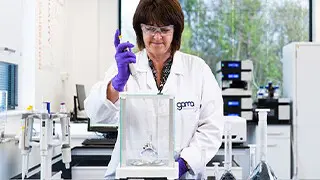Posts by GAMA Healthcare team
Face masks, face shields, and preventing the spread of COVID-19
The SARS-CoV-2 virus that causes COVID-19 is primarily spread by respiratory droplets, although other routes of transmission (including contact with contaminated people and surfaces) play a role too. One of the most important ways to prevent the spread of the respiratory droplets that transmit SARS-CoV-2 is through physical distancing. Where this is not possible, respiratory…
Read MoreAssessing the risk of hospital transmission of COVID-19
As hospitals move past the peak of the COVID-19 pandemic, the risk of hospital-transmission looms large. Elective services will reopen and patients who have not been exposed to COVID-19 as a result of the broadly successful lockdown will come into hospitals and risk exposure to patient (and staff) with COVID-19 infections. How big is this…
Read MoreEnvironmental contamination with COVID-19: how big is the risk?
There have been several studies examining the potential risk for contaminated environmental surfaces being involved in the transmission of COVID-19. We know that the SARS-CoV-2 virus, that causes COVID-19, can survive on dry surfaces for days, like its ‘cousins’ the SARS and MERS viruses. We know it can be found in clinical settings during the care…
Read MoreCoronavirus: a lecture by Martin Kiernan
This lecture was given to staff at Southport and Ormskirk Hospital NHS Trust on 26th March 2020 as part of Martin’s role back in the NHS. The below vidoes are directly linked to their YouTube channel. The origins of coronavirus Find out how COVID-19 compares with SARS and MERS, and how the UK compares with…
Read MoreCOVID-19 pandemic picks up pace
The latest news on the COVID-19 pandemic is that it’s picking up pace and very much going global. There have now been more than 450,000 confirmed cases worldwide, and more than 21,000 deaths (with a case fatality rate of 4.5% amongst confirmed cases). In the UK, there have been almost 10,000 confirmed cases and more…
Read MorePersistent shedding of COVID-19 – what does this mean?
Several epidemiological studies have shown that the shedding of the SARS-CoV-2 virus that causes COVID-19 can continue for many days after symptoms resolve. What does this mean? Do people remain infectious after their symptoms resolve? The answer isn’t clear, but it seems that people are most infectious at the start of their symptoms, and much less…
Read MoreThe role of the environmental hygiene nurse in preventing HCAI
An interesting article published recently in Infection Prevention in Practice illustrates the potential for a dedicated nursing role focussed on environmental hygiene to prevent HCAI. The study was performed in a 32-bed general ICU in Argentina. The intervention was the introduction of a novel post: the “Hospital environmental hygiene nurse”. This post was a full-time post dedicated to direct…
Read MoreWe are exhibiting at Arab Health 2020
We’re excited to exhibit at Arab Health – the largest medical exhibition in the Middle East. Come and meet our international team at stand H3.A10, for 4 days filled with peer to peer education and insightful conversations on our latest infection prevention and control solutions. You’ll get a chance to see RediRoom, the worlds’ first…
Read MoreChlorhexidine bathing reduces healthcare-associated BSI
A well-conducted systematic review and meta-analysis of the evidence around the effectiveness of chlorhexidine bathing to prevent healthcare-associated BSI has been published recently in BMC Infectious Diseases. The study concludes that chlorhexidine bathing significantly reduces the risk of healthcare-associated BSI by 41%. The reduction in the risk of BSI was consistent across different study designs (e.g.…
Read MoreCDC issues updated antibiotic resistance threat report
As 2019 draws to a close, and we look to 2020, it’s interesting to see how the CDC assesses the risks associated with antibiotic resistance in their updated threat report. The report is well worth a read, providing an overview of the threat of antibiotic resistance, a discussion on the approaches to preventing the emergence and…
Read More














